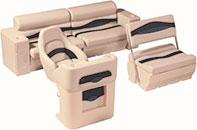boat seat buyer guide
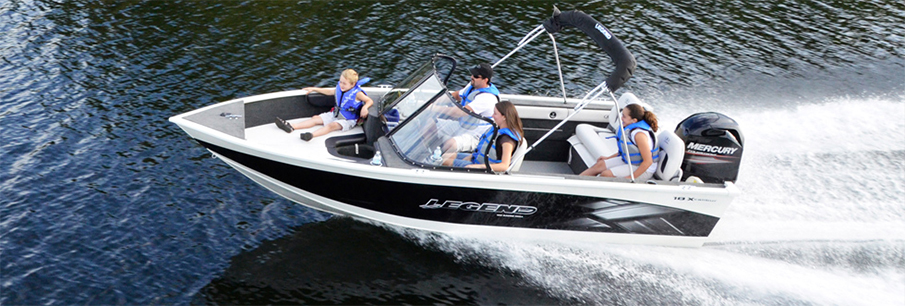
Boat Seat Style Guide: Pontoon Seats
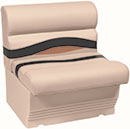
- Seats are modular to fit together for a bench-like seating arrangement
- Most seats feature storage boxes underneath
- Mounts directly to the boat floor
- Come as a matching set in a pre-arranged format
- Will fit the front, rear, or entire pontoon boat
- Items are freight shipped with assembly required
Boat Seat Style Guide: Seats Common on Cruisers & Runabouts
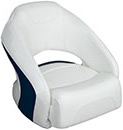
- Bolster flips up to provide standing stability
- Ideal for either captain's or passenger chairs
- Most commonly used on runabouts or fish n' ski boats
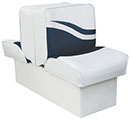
- Two seats on one base connected at the back
- Most slide out to lay flat, and have storage underneath
- Mounts directly to the floor of the boat
Boat Seat Style Guide: Seats Common on Fishing & Bass Boats
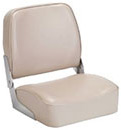
- Simple in style
- The backrest will fold down for easy storage
- Common on fishing, utility, jon, and row boats
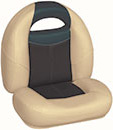
- Fits perfectly in the helm as the captain's chair
- Can have other features, like a bolster
- Will fit on most boats
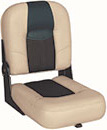
- Attaches between 2 bucket style seats to create a bench seating arrangement
- Common on bass and walleye boats
- Mount to individual or kit pedestals
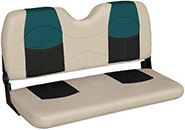
- Simple design for multiple people
- Common on bass and walleye boats
- Mounts directly to the boat deck
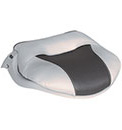
- Gives stability for fishing in a standing position, especially on rough water
- Common on bass or walleye boats
- Mounts to a pedestal
Boat Seat Style Guide: Seats Common on Offshore Boats

- Battle ready for the fight of reeling in any large catch
- Most include their own rod-holders integrated into the design
- Usually used on large deck boats
- Typically mounts to a Pedestal
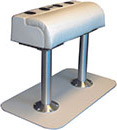
- Provides standing support while navigating or fishing
- Commonly used on offshore boats or as center console boat seats
- Mounts directly to the boat deck
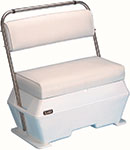
- The base is actually a cooler, and the seat serves as the cooler’s lid
- Cooler units vary in size and capacity
- Mounts directly to the boat deck
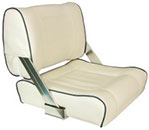
- The back rest slides from one end of the seat cushion to the other, allowing the seat to face forward or backward
- Mounts on a box, post, or pedestal
Replacing Boat Seats: Things to Consider
Measure Available Space
- Measure the space where you want your seats and match this with the full dimensions of the seat. DO NOT make the common mistake of just measuring for the cushions.
Determine Your Preferred Number of Passengers.
- Keep this number in mind as you shop, it will help to narrow down your search.
Identify any Storage Needs.
- If there isn’t enough storage on your boat, consider choosing a boat seat base with storage underneath.
Note Your Current Seat Style.
- If you are replacing seats, especially just a few, then you’ll want to choose something with a similar style as the old seats to maintain continuity in the look and feel.
Save Mounting Hardware.
- New boat seats usually don't come with any mounting hardware, so be sure to save screws, bolts, etc. from your old seats. If you do end up needing some replacement hardware, you should be able to find what you need at your local hardware store.
Think About Related Items You Might Need.
- Shopping for seats is also a good time to shop for furniture and accessories, this way you can coordinate with the seats, and save money by purchasing in groups.
How to Install Boat Seats
General tips to consider:
- Refuse delivery of a damaged package and it will get sent back straight away. This will be the easiest time to take care of a return for a damaged item.
- Open the box with a key instead of a knife to avoid damaging upholstery.
- Place the seat and then mark the edges with tape to have reference when installing the mount.
- Double check the area underneath your mounting spot to make sure you won’t be drilling in to anything you could damage like wires or tanks.
- Use the wide 'fender' washers to prevent the deck from cracking, and lock nuts to keep the seat from wiggling loose.
- After you place a mounting bracket, drill the screw holes one at a time adding a bolt after each hole to keep the bracket in position.
Tools you might need:
- Adjustable wrench or socket wrench
- Philips screw driver or electric screw driver
- Electric drill, drill bits, and hole saw
- Rubber mallet
Installing different types of boat seats
The specifics of boat seat mounting vary widely depending on seat style, boat type, and application. Here we provide you with what materials we have available on various seat installations.
Back-to-Back Seat assembly & installation instructions from Wise
Bass Boat Seat installation instructions from Wise
- Bass Boat Seat Installation (WD1450 & WD1451)
- 10" Center Step Pad Installation (WD1457)
Pontoon Boat Seat assembly & installation instructions from Wise
- General Pontoon Furniture Assembly
- Bench & Corner Section Assembly (Premier Series)
- 55" Bench Assembly (Premier Series)
- Steering Console Assembly (Deluxe Series)
- Swingback Cooler Assembly
- Usage Warning
- Shop Pontoon Seats & Tables
- Shop Pontoon Seat Sets
- Todd Universal Leaning Post installation video
Measuring for Pontoon Seating
Follow this guide to obtain all the measurements you need to select replacement seats for your pontoon boat.
Be sure to take measurements inside the rails, and account for any rail support braces or other obstructions.
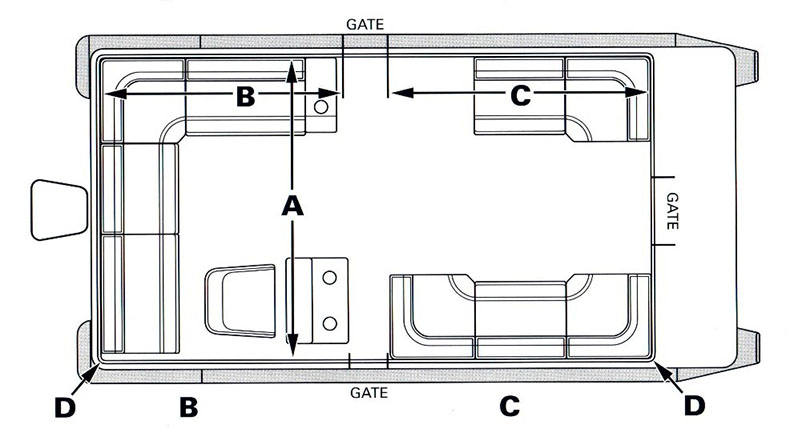
- A. Measure from port to starboard rails. Most pontoon boats will be 89"-93" (add 1" of extra space for vinyl and foam rails)
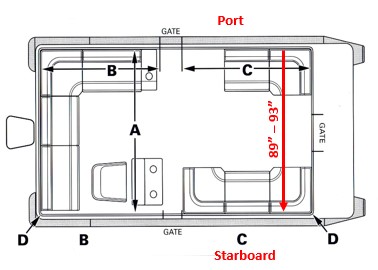
- B. Measure the distance from the rear rail to the side gate.
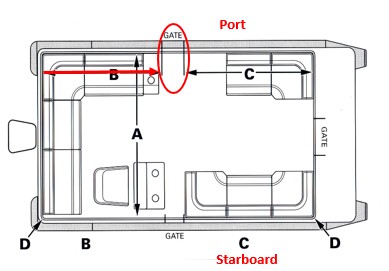
- C. Measure the distance from the front rail to the side gate.
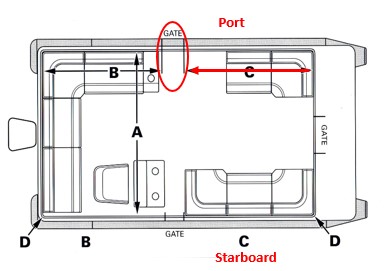
- D. Note if your pontoon boat's inside corners are rounded or square. If they are rounded, you will need to know what radius the corner seats should have.
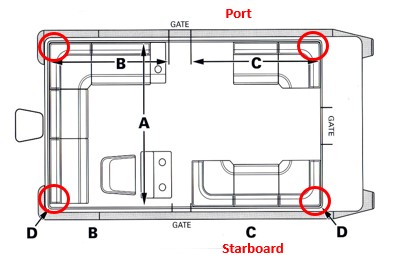
The seat radius is how wide the rounded edge on a corner seat is, and is important to know because you'll want your seat to fit snugly against the railing.
How to Measure a Pontoon Boat Railing Corner Radius
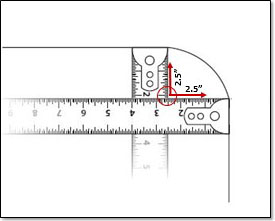
- Place a tape measure on the railing where the curve begins. Place another tape measure on the other side of the corner.
- Extend the two tape measures until they intersect. Adjust their angles until they each intersect at the same point.
- The measurement on the tapes where they both intersect is the radius of the railing corner.
- For example, if they intersect at 2.5 inches, then the radius is 2.5 inches.
Choosing the Right Seat Pedestal
Choosing an appropriate seat pedestal can be a confusing task. To help you select, measure, and install boat seat pedestals for your application, please refer to our boat seat pedestal application chart.
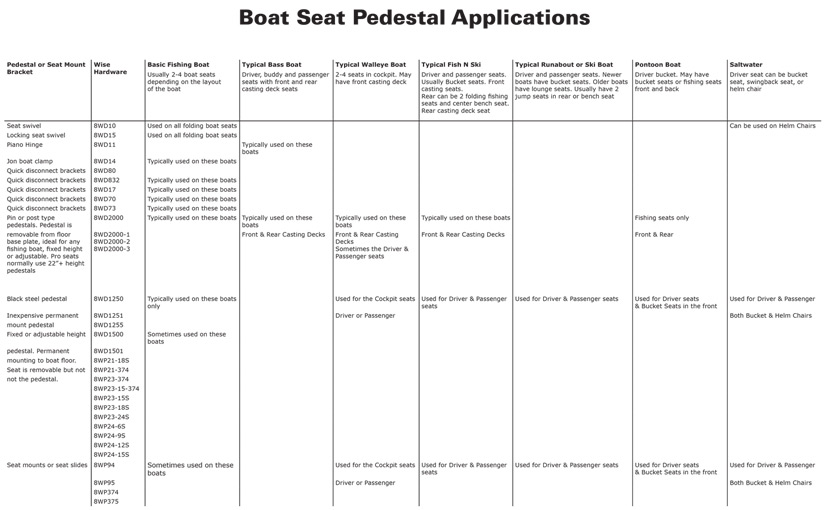
In addition to different pedestal styles, there are also safety ratings to consider. Since 1996, boat seat pedestals have been categorized by three basic safety standards recommended by the American Boat & Yacht Council or (ABYC). These standards help boaters to choose the safest pedestal to fit their needs. Class A pedestals (both AD & AP) means they can be used at any speed, while class B pedestals should only be used at speeds 5 mph or less, such as when trolling. The graphic and table below explain the three types:

| American Boat and Yacht Council's Safety Class Ratings for Seat Pedestals | |
|---|---|
| Class A Driver (AD) |
|
| Class A Passenger (AP) |
|
| Class B |
|
Cleaning Vinyl Upholstery
For Mildew
- 1 Tbsp. ammonia
- ¼ cup water
Mix and apply to mildew spots, letting it sit for no more than 10 minutes. Scrub with a soft bristle brush and rinse well with soap and water, allowing the fabric to dry completely.
For General Cleaning
- ¼ cup Dawn dish soap
- 1 gallon water
Fully wet the fabric and then scrub it down with a soft brush or cloth, give it a good rinse with water, and allow the fabric to fully dry.
Get tough spots clean with 303 Fabric & Vinyl Cleaner
Apply 303 High Tech Fabric Guard to the clean, dry surface to protect the fabric from the elements and extend its life.

